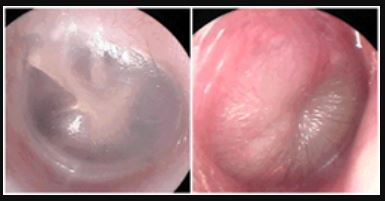PITTSBURGH, PENNSYLVANIA — A team of doctors and scientists from the University of Pittsburgh Medical Center (UPMC) and the University of Pittsburgh have developed a groundbreaking smartphone app that uses artificial intelligence (AI) to accurately diagnose ear infections, known as acute otitis media (AOM), in young children.
Their findings, published in the journal JAMA Pediatrics, suggest that this AI tool could help reduce unnecessary antibiotic prescriptions and improve treatment for this common childhood illness.
Improving Accuracy to Reduce Unnecessary Antibiotic Use
AOM is one of the most frequent infections for which antibiotics are prescribed in children. However, it can be challenging to distinguish from other ear conditions without extensive training, leading to misdiagnosis and improper treatment. The new AI tool addresses this issue by assessing a short video of the eardrum taken through an otoscope attached to a smartphone camera.
“Acute otitis media is often incorrectly diagnosed,” explained Dr. Alejandro Hoberman, the study’s senior author and a professor of pediatrics at Pitt’s School of Medicine.
“Underdiagnosis results in inadequate care, and overdiagnosis leads to unnecessary antibiotic treatment, which can compromise the effectiveness of currently available antibiotics. Our tool helps get the correct diagnosis and guide the right treatment.”

Images of eardrums from a healthy patient (left) or with acute otitis media (right) captured by the new smartphone app. Image credit: Alejandro Hoberman
To develop the AI tool, the researchers built and annotated a training library of 1,151 eardrum videos from 635 children who visited UPMC pediatric clinics between 2018 and 2023. Two experts in AOM research reviewed the videos and determined whether each case was AOM or not. The team then used this data to train two different AI models to detect AOM by analyzing features of the eardrum, such as shape, position, color, and translucency.
When tested on a separate set of 230 videos, both AI models demonstrated remarkable accuracy, with sensitivity and specificity values greater than 93%. This means that the models had low rates of false negatives and false positives, surpassing the diagnostic accuracy of many clinicians, which ranges from 30% to 84% according to previous studies.
“These findings suggest that our tool is more accurate than many clinicians,” said Hoberman. “It could be a gamechanger in primary health care settings to support clinicians in stringently diagnosing AOM and guiding treatment decisions.”
Improving Outcomes in Primary Care
The researchers highlight additional benefits of their AI tool. The eardrum videos can be stored in a patient’s medical record and shared with other providers, enhancing continuity of care. Additionally, the tool serves as a valuable teaching aid, enabling clinicians to explain their diagnosis to parents and trainees while demonstrating the visual cues used by the AI.
Hoberman hopes that this technology can be widely implemented across healthcare provider offices to enhance accurate diagnosis of AOM and support appropriate treatment decisions, ultimately reducing unnecessary antibiotic use in young children.
Other authors on the study were Nader Shaikh, M.D., Shannon Conway, Timothy Shope, M.D., Mary Ann Haralam, C.R.N.P., Catherine Campese, C.R.N.P., and Matthew Lee, all of UPMC and the University of Pittsburgh; Jelena Kovačević, Ph.D., of New York University; Filipe Condessa, Ph.D., of Bosch Center for Artificial Intelligence; and Tomas Larsson, M.Sc, and Zafer Cavdar, both of Dcipher Analytics.
The research was supported by the Department of Pediatrics at the University of Pittsburgh School of Medicine.
Reference:
- Shaikh NConway SJKovačević J, et al. Development and Validation of an Automated Classifier to Diagnose Acute Otitis Media in Children. JAMA Pediatr. Published online March 04, 2024. doi:10.1001/jamapediatrics.2024.0011
Source: UPMC, JAMA Pediatrics






